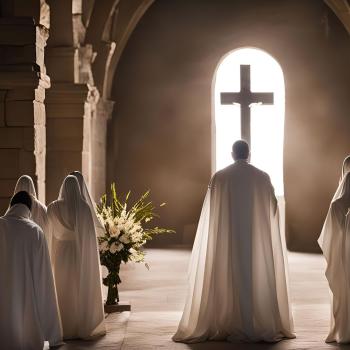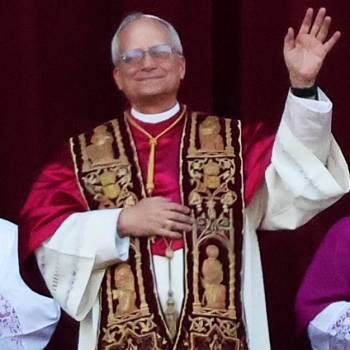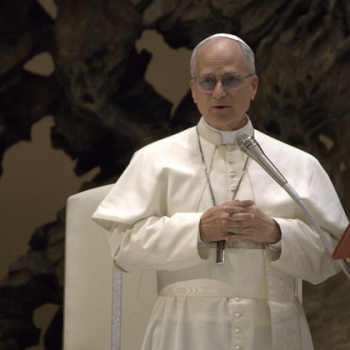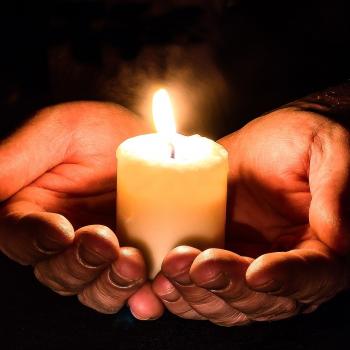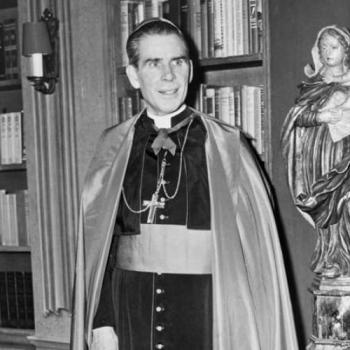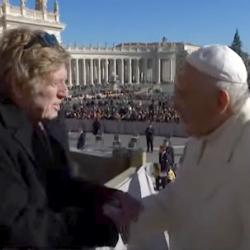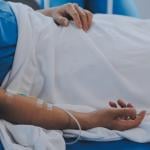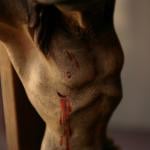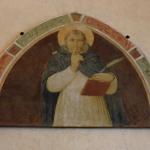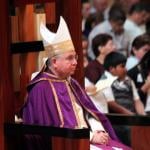This Tuesday, barely a week past the 15th anniversary of the 9/11 terror attacks, my wife and I did something we’d long wanted to do: we paid a visit downtown to the 9/11 Memorial and Museum at the World Trade Center.
To say it was an emotional experience would be an understatement.
I still remember my first visit to the site, barely six months after the attacks; I was down there as part of the CBS production staff to record material for the documentary “9/11.” Back then, the taping happened in the middle of the night, close to midnight, on a brutal February evening, but I remember the site being lit up as bright as day. Recovery teams were working around the clock. The place was awash in mud and grime; many of the surrounding buildings had been emptied, vacant since 9/11. But everywhere you looked you saw flags, banners, posters. “God Bless Our Heroes.” “God Bless America.” “USA.”
Now, 15 years later, the neighborhood is very different: brimming with energy and new life, with the memorial and museum at its heart.
We climbed up out of the subway around 2:30 and the first thing I noticed was a gleaming cross: a Catholic memorial erected outside St. Peter’s Church, just two blocks from the World Trade Center site. It was here where they brought the body of Fr. Mychal Judge the morning he was killed.
[img attachment=”120211″ align=”aligncenter” size=”full” alt=”img_6332″ /]
The church’s website has this account, which I’d never seen before:
His body was carried by two firemen, an FDNY medical technician, a police lieutenant and a civilian bystander into St. Peter’s and laid in front of the altar. Fr Fussner, a priest at St. Peter’s Church noticed that Fr. Judge’s neck was swollen and appeared to be broken. Resting on the marble, Fr Judge’s body was covered in a white cloth with a fresh stole from sacristy on top and his chaplain’s badge and helmet resting on his chest. Fr Fussner added that the firemen pulled two of the candles close to either side of his body and a Franciscan friar later pointed out that the resulting pose resembled a bas-relief sculpture of Christ immediately behind the body. At around 2pm, two Franciscan friars from Fr Judge’s residence carried his body to a fire station across from his residence.
We walked over to the museum and memorial. The area is still a maze of construction fences and road blocks; eventually, it will be a large pedestrian mall, to keep traffic at a distance and maintain a sense of solemnity and silence. I’d bought our tickets on line a few days earlier, reserving a 3:30 pm guided tour. I should point out: a trip to the museum isn’t cheap. Admission plus the tour for the two of us came to $88 ($44 a person). Admission alone, without the tour is $24. My advice: take the tour. It’s worth it.
We showed our tickets (printed at home before we left), had them scanned, and entered the building on the ground floor; we passed through metal detectors and had our bags x-rayed (similar to what you go through at the airport) and then headed downstairs to wait for the tour.
We passed some time by visiting the museum gift shop.
[img attachment=”120213″ align=”aligncenter” size=”full” alt=”img_6338″ /]
[img attachment=”120212″ align=”aligncenter” size=”full” alt=”img_6339″ /]
My wife said, “Look — the pope,” and sure enough, they had some mementos from his visit last year.
[img attachment=”120214″ align=”aligncenter” size=”full” alt=”img_6342″ /]
We walked back to a central gathering area for our tour. There were seven of us. Our guide gave us headphones and a little box to pick up her signal and adjust the volume, and we headed off deeper into the bowels of the building.
Strikingly, nearly all of the museum is underground; the idea, I read, was to give a sense of a collapsed building. It was often dark and frequently disorienting, but it never felt claustrophobic. If anything, the atmosphere gave the experience a sense of solemnity and severity. And, as we discovered, the result is fully immersive.
We began the tour beside a photograph that was taken just 16 minutes before the first plane struck. The sky was cloudless and thrillingly blue. It was that kind of morning.
[img attachment=”120215″ align=”aligncenter” size=”full” alt=”img_6346″ /]
We then turned to enter a long, dark hallway with images from that awful morning—mostly of people reacting to it—and the sound of witnesses describing what they saw.
[img attachment=”120216″ align=”aligncenter” size=”full” alt=”img_6347″ /]
[img attachment=”120217″ align=”aligncenter” size=”full” alt=”img_6349″ /]
We made our way down to the main hall of the museum. One of the key artifacts we passed was a set of meticulously preserved concrete stairs. These stairs, we were told, were the main escape for many who survived; the families—who had a significant say in how the memorial was put together—insisted that they be kept as part of the museum.
[img attachment=”120218″ align=”aligncenter” size=”full” alt=”img_6357″ /]
As we walked deeper underground, we next saw a spectacular wall of blue—echoing the sky of that fateful day—made up of nearly 3,000 squares, each a slightly different shade of blue, one for each person who was lost on 9/11. The quote, from the Aenid, is meant to evoke the mission and message of this memorial: we will never forget.
[img attachment=”120219″ align=”aligncenter” size=”full” alt=”img_6358″ /]
After that, we passed a variety of artifacts. There was this smashed firetruck.
[img attachment=”120220″ align=”aligncenter” size=”full” alt=”img_6362″ /]
[img attachment=”120221″ align=”aligncenter” size=”full” alt=”img_6363″ /]
The broadcast antennae which stood atop one of the towers.
[img attachment=”120222″ align=”aligncenter” size=”full” alt=”img_6359″ /]
A helmet.
[img attachment=”120223″ align=”aligncenter” size=”full” alt=”img_6364″ /]
And this one massive piece of metal, a beam, which we were told was the one artifact we were allowed (and encouraged) to touch. But nobody really wanted to.
[img attachment=”120224″ align=”aligncenter” size=”full” alt=”img_6368″ /]
We also saw the last column that was removed from the World Trade Center site after all the rubble had been cleared.
[img attachment=”120225″ align=”aligncenter” size=”full” alt=”img_6376″ /]
[img attachment=”120226″ align=”aligncenter” size=”full” alt=”img_6379″ /]
[img attachment=”120227″ align=”aligncenter” size=”full” alt=”img_6380″ /]
One of the things that struck me here—and it happened several times—was the continued, fervent, insistent presence of faith. People scrawled prayers on these pieces of metal, and elsewhere, and it became a recurring motif at the museum. The question has often been asked, “Where was God on 9/11?” He was there.
And he is here. Still.
[img attachment=”120228″ align=”aligncenter” size=”full” alt=”img_6381″ /]
[img attachment=”120229″ align=”aligncenter” size=”full” alt=”img_6382″ /]
[img attachment=”120230″ align=”aligncenter” size=”full” alt=”img_6383″ /]
[img attachment=”120231″ align=”aligncenter” size=”full” alt=”img_6384″ /]
I noticed it again when we went into a series of rooms that have personal effects from those who were there. One room has the famous “Cross at Ground Zero.”
[img attachment=”120232″ align=”aligncenter” size=”full” alt=”img_6395″ /]
And there was this sign which was posted nearby to remind the recovery workers of Sunday Mass.
[img attachment=”120233″ align=”aligncenter” size=”full” alt=”img_6396″ /]
Much of the visit can be emotionally overwhelming; it just brings it all back again. You see part of an airplane, with a window, and can’t help but wonder: “Who was the last person to look out that window? What did they see?” You see warped, half-melted credit cards from American Express and Banana Republic; there are pages from airline magazines seared by the heat onto metal; and there’s the strangely ironic sign from the Warner Brothers Store that used to be in mall in the basement of the World Trade Center: “That’s All Folks.”
It’s like a Smithsonian of sorrow—pop culture entwined with grief and tragedy and almost incomprehensible sadness. It still seems like it was only yesterday.
Some of the rooms have warning signs outside, alerting visitors that what they’ll find inside may be too intense or upsetting. And along your route, there are frequent reminders that you might find it all too much to bear.
[img attachment=”120235″ align=”aligncenter” size=”full” alt=”img_6397″ /]
Our guide helpfully advised us at the beginning: “If you need a break, that’s fine. If you need to leave, that’s okay, too,” and she noted there were many exits along the way, and benches if you just needed to sit and take a moment.
Some of the visual and auditory sensations can really get to you. Walking through one section, and seeing wallets and briefcases and crumbling train tickets and hearing in the speakers overhead the final phone messages of loved ones, describing where they are and saying what time they were calling and letting them know there was an accident and they’d call back—is devastating. But, I think, it’s necessary. Reliving it makes us ask ourselves: “If I had been there, making that call, what would I have said? What would I have done?” It has a way of focusing your thinking in profoundly unsettling ways.
There were a few times I had to pause and read a sign—and then re-read it to let it all sink in and grasp just where we were and what had happened here.
[img attachment=”120239″ align=”aligncenter” size=”full” alt=”img_6394″ /]
As we left and wandered back toward that bright blue wall with the Virgil quote, I noticed this plaque:
[img attachment=”120237″ align=”aligncenter” size=”full” alt=”img_6399″ /]
You could almost miss it. I wish our guide had mentioned it. Wikipedia reports:
In an early-morning ceremony on May 10, 2014, the long-unidentified remains of 1,115 victims were transferred from the city medical examiner to Ground Zero, where they would be placed in a space in the bedrock 70 feet (21 m) below ground as part of the 9/11 Museum. Reaction from the victims’ families to the move was divided, with some supporting the decision and others calling the location inappropriate. Among the latter was FDNY Lt. James McCaffrey, the brother-in-law of 9/11 victim and firefighter Orio Palmer, who called a ground-level tomb a more dignified location: “The decision to put the human remains of the 9/11 dead in this basement is inherently disrespectful and totally offensive.” McCaffrey said that the remains deserved a prominence equal to that of the Memorial’s trees and pools, and that the ceremony was held early in the morning because of opposition to the decision.
My wife and I made our way back upstairs. Even on leaving, you are given a gentle but powerful audio cue: you hear “Amazing Grace” and “Taps” quietly playing as you ride the escalator back to the main floor. How often we heard that in the weeks following the attacks, at funeral after funeral after funeral.
We headed outside to an information booth and sought out the one name I wanted to find on the memorial surrounding the World Trade Center “footprint.”
[img attachment=”120245″ align=”aligncenter” size=”full” alt=”img_6407″ /]
I touched the name, whispered a prayer. And then, the tears came.
We walked around a bit outside. Once or twice, we saw private tributes to the lost.
[img attachment=”120246″ align=”aligncenter” size=”full” alt=”img_6410″ /]
If you have the chance, visit the 9/11 Memorial and Museum. This is an important part of our history, and a defining moment that has led us to where we are today. (Part of the museum helps tell the story of Al Qaeda and also chronicles the 1993 attack that killed six people with a car bomb planted in the basement.) But it stands before us as a monument not to tragedy, but to resilience and fortitude and hope. You not only see the great horror of what happened, but are reminded of the great goodness of people who came together during America’s darkest hour. Part of the museum recounts the days after 9/11/01. Remember what it was like? Candles were lit. Vigils were held. Hymns were sung. Men and women rolled up their sleeves and sacrificed for one another.
And today, a new tower now rises from the ashes of that awful day.
Somehow, life goes on. We rebuild. We remember. And we do what we always do.
We pray.
Eternal rest grant unto them, O Lord, and let perpetual light shine upon them. May their souls and the souls of all the faithful departed, through the mercy of God, rest in peace. Amen.
[img attachment=”120251″ align=”aligncenter” size=”full” alt=”img_6401″ /]
All photos: Deacon Greg Kandra



